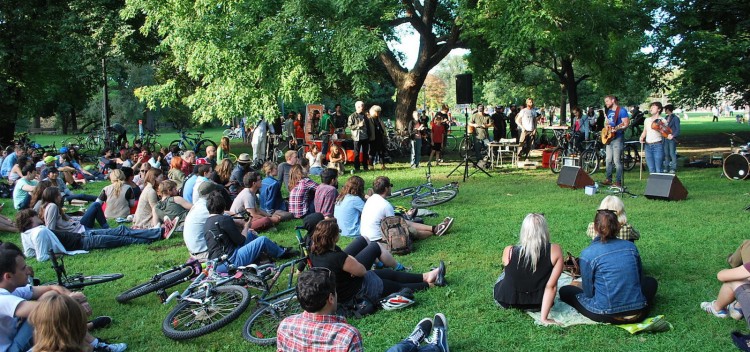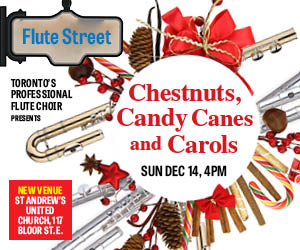
The Arts in the Parks Toolkit, available on the Toronto Arts Foundation website and as a PDF, is – in its PDF form – a painstaking 96-page booklet covering the process of mounting artistic projects in Toronto’s parks. The resource is aimed at helping community organizations and municipalities plan their own arts events in parks and urban green spaces.
The project grows out of the Toronto Arts Foundation’s “Arts in the Parks” initiative, which was launched in 2016 to bring free arts events to parks throughout the city each summer. Working with community organizations and artists throughout the GTA, the TAF presents Arts in the Parks as an annual series of artist-produced projects. Last year, the Arts in the Parks series featured 282 events produced by 33 different artists and arts groups, in 36 public spaces across the Toronto area. In the past, these events have included projects by such arts groups as Shadowland Theatre, Kaeja D’Dance, Arts Etobicoke, Feast in the East, and Tune Your Ride Collective’s Toronto Bicycle Music Festival, which connects free concerts in parks throughout the city via group bike rides.
With the publication of this Arts in the Parks Toolkit, the TAF hopes to provide a guide for other artists and community organizers to navigate the processes, often daunting to the uninitiated, involved when mounting creative projects in public outdoor spaces. The toolkit is also connected with existing resources for community organizing – including the Ontario Trillium Foundation’s Knowledge Centre, an online forum for knowledge-sharing and community-building within the provincial nonprofit sector.
The toolkit includes general reflections on the function of a park within a city, and suggestions on dealing with the practical considerations of outdoor, public and site-specific creative work. Perhaps most useful is the toolkit’s nuts-and-bolts information on the permits, insurance, and various other regulations involved when planning events in local parks, as well as its tips for funding and grant writing – something that might prove especially helpful for those artists considering applying for grants from the Toronto Arts Council.
In the opening pages of the toolkit, Claire Hopkinson, director and CEO of the Toronto Arts Foundation and the Toronto Arts Council, talks about her vision of the city’s parks as spaces for community-building. “We hope [that this toolkit] will add to conversations about the changing role of parks as social and cultural spaces,” she writes, “and serve as a helpful resource for community visionaries to tap into the transformative power of the arts in public spaces.”
Hopkinson ends her comments with a disclaimer – and a call to action. “It’s not a playbook, but a guide to help navigate some of the logistical, financial and artistic considerations involved in producing arts events in parks and other public spaces,” she says. “Make this your own.”
The Arts in the Parks Toolkit is available as a PDF booklet, and as an online resource on the Toronto Arts Foundation website.


